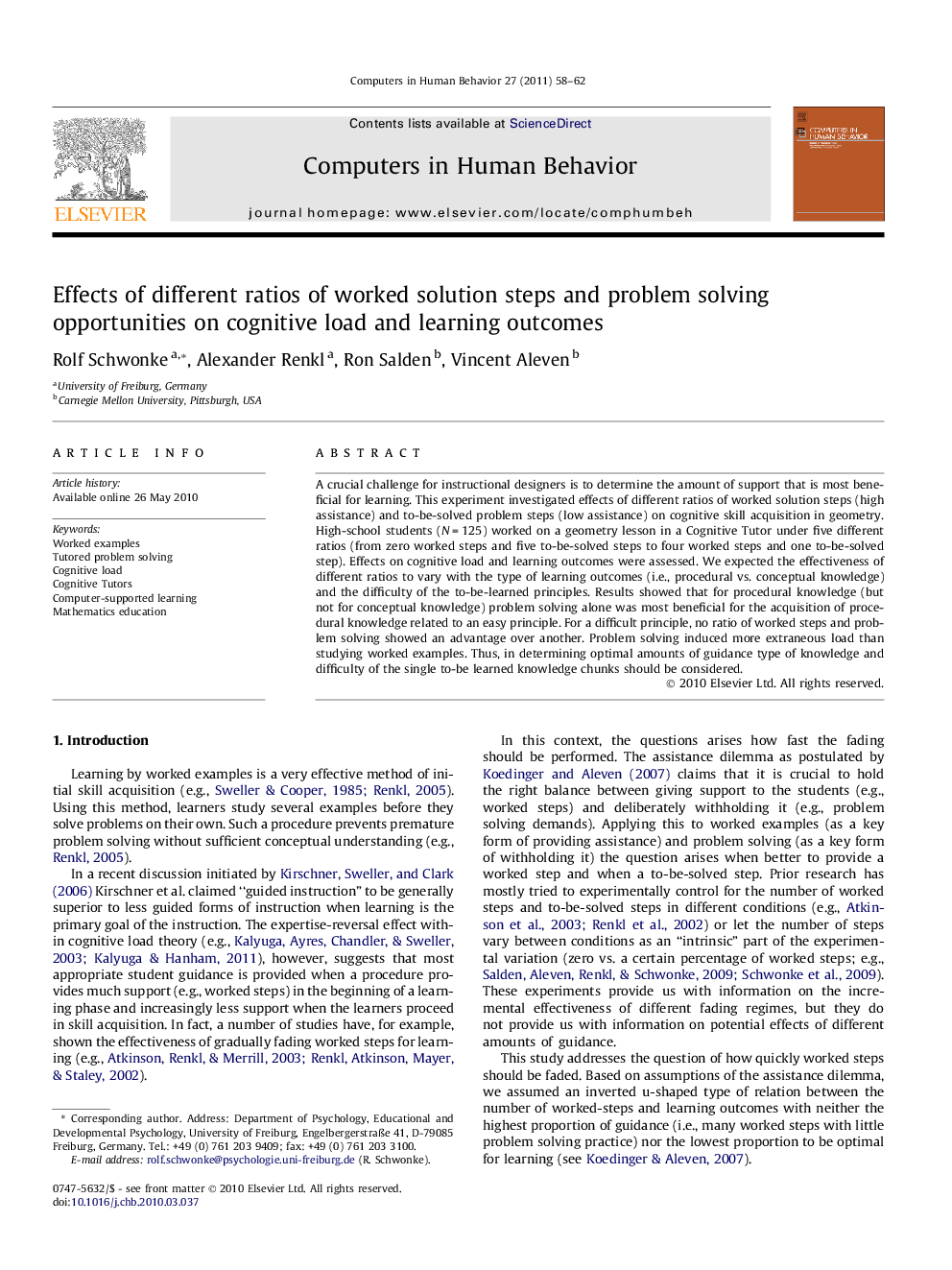| کد مقاله | کد نشریه | سال انتشار | مقاله انگلیسی | نسخه تمام متن |
|---|---|---|---|---|
| 351770 | 618478 | 2011 | 5 صفحه PDF | دانلود رایگان |

A crucial challenge for instructional designers is to determine the amount of support that is most beneficial for learning. This experiment investigated effects of different ratios of worked solution steps (high assistance) and to-be-solved problem steps (low assistance) on cognitive skill acquisition in geometry. High-school students (N = 125) worked on a geometry lesson in a Cognitive Tutor under five different ratios (from zero worked steps and five to-be-solved steps to four worked steps and one to-be-solved step). Effects on cognitive load and learning outcomes were assessed. We expected the effectiveness of different ratios to vary with the type of learning outcomes (i.e., procedural vs. conceptual knowledge) and the difficulty of the to-be-learned principles. Results showed that for procedural knowledge (but not for conceptual knowledge) problem solving alone was most beneficial for the acquisition of procedural knowledge related to an easy principle. For a difficult principle, no ratio of worked steps and problem solving showed an advantage over another. Problem solving induced more extraneous load than studying worked examples. Thus, in determining optimal amounts of guidance type of knowledge and difficulty of the single to-be learned knowledge chunks should be considered.
Journal: Computers in Human Behavior - Volume 27, Issue 1, January 2011, Pages 58–62